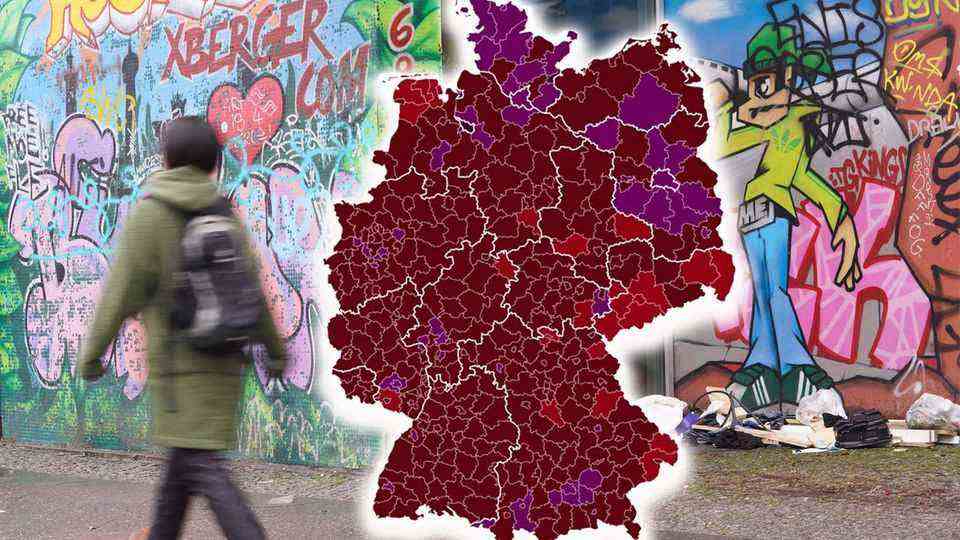Corona numbers
Map shows the Corona situation in your district
The corona incidences are very different across Germany. An interactive version of the map is below
© 23 Degrees / Picture Alliance
When it comes to corona incidents, the situation varies greatly depending on the region and age group. See what the situation is like on your doorstep.
This article is continuously updated, you can see the current status of the data in the graphics.
In the graphics below you can find out what the corona situation looks like in your region. The data comes from the Robert Koch Institute (RKI) and was supplemented by our own calculations and other sources for the age distribution. You can select the age group you want above the map.
Map: Infection rate in German districts and cities and by age group
Note for mobile users: If the graphics are not displayed here or are not displayed correctly, please click here.
Ranking: counties and cities with the highest rate
The view below shows the districts and cities with the most confirmed corona cases per 100,000 inhabitants in the last seven days in descending order.
You can scroll down the view and click on the bars for more details:

background and sources
The federal and state governments set up a kind of pandemic warning system last year, the seven-day incidence. The idea: If the number of new infections in a district increases too much per 100,000 inhabitants within seven days, stricter protective measures are put into effect again or relaxations are withdrawn.
The RKI publishes the case numbers every day, which were sent to it by the health authorities by midnight on the respective day. The presentation of the newly transmitted cases per day is based on the reporting date. This is the date “on which the local health department became aware of the case and recorded it electronically,” says the RKI website. Those responsible for the region may communicate directly with the health authorities and may already have the numbers available before the RKI.
Source: Robert Koch Institute,


